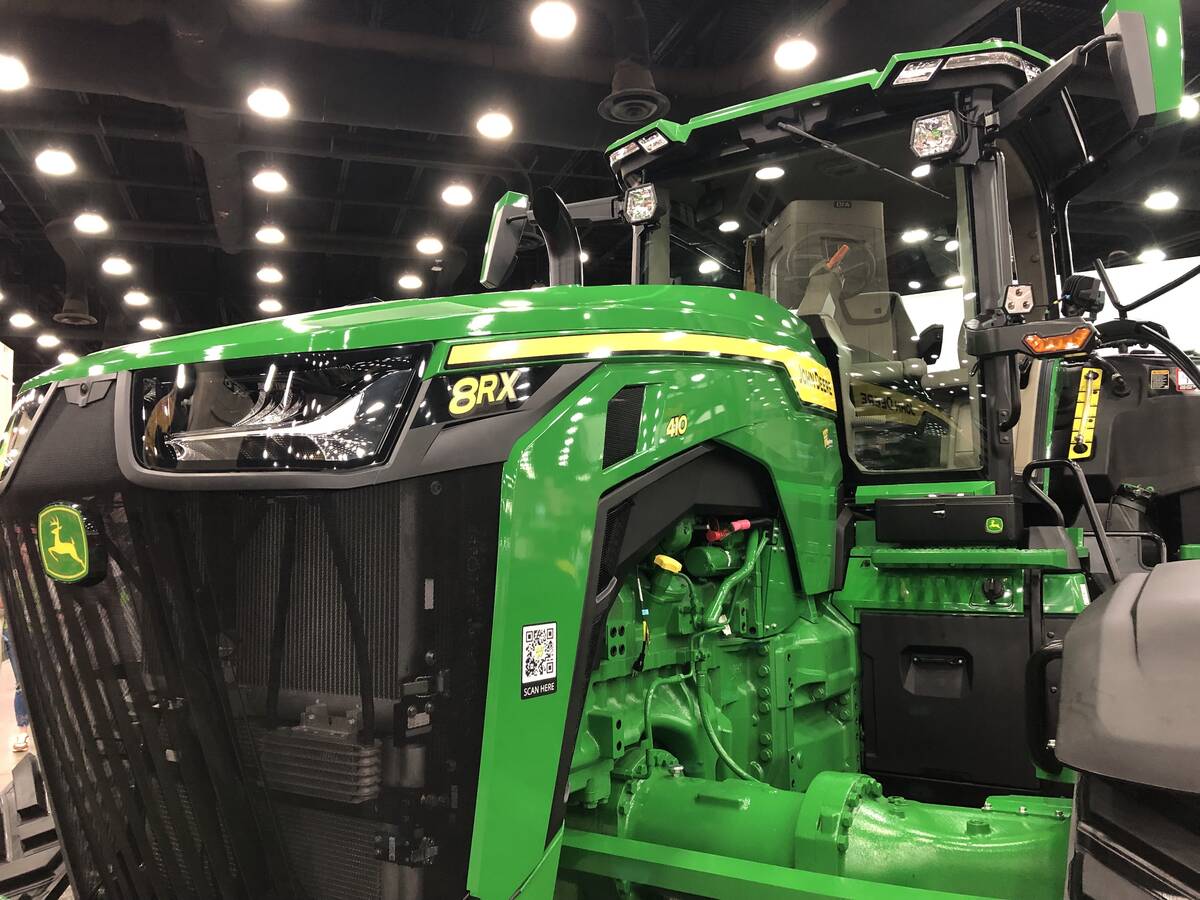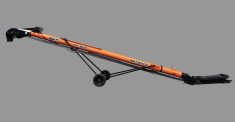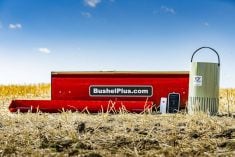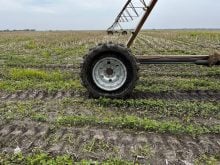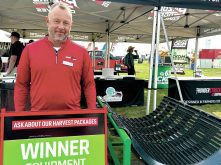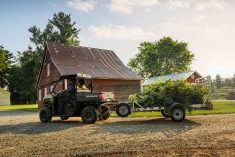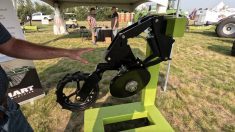On its second-quarter earnings call in May, John Deere executives revealed U.S. President Donald Trump’s tariffs had added substantially to its production costs so far this year — and will likely add up to half a billion U.S. dollars if the tariffs continue through to the end of 2025.
“(There will be) a pre-tax tariff impact for 2025 of just over $500 million should these tariff levels remain over the fiscal year, based on the tariffs in place on May 13,” said Josh Rolater, Deere’s manager of investor communications.
Of course, with the U.S. president frequently altering or pausing tariffs on an apparent whim, it’s impossible to say with any certainty what U.S. tariff policy will be in place next week, let alone in six months.
Read Also

Claas brings 1000 Series SP forage harvesters to Canada
In mid-August, Claas unveiled its new line of Jaguar forage harvesters at an event in Visalia, California, deep in the heart of that state’s dairy region.
On May 30, barely a couple of weeks after Rolater said that, tariffs on imports of steel and aluminum to the United States — a major input in ag equipment manufacturing — were doubled to 50 per cent, effective June 4.
The upping of those specific tariffs seems to add fuel to accusations by a large number of legal and political experts as well as media outlets that the president is using his office for unprecedented levels of personal gain. In late May, Emirates Global Aluminum announced a plan to establish a production facility in the U.S. Ownership of that firm is linked to a UAE state-owned holding company.
Just a few weeks ago, Trump visited the Gulf states and collected some pretty significant personal gifts there, most notably a $400 million Boeing 747 aircraft from Qatar.
In mid-May, the Guardian newspaper from Great Britain published a report associating Trump to an even larger wealth transfer from the UAE.
“Gulf states have offered other incentives, including a $2 billion investment from a UAE-controlled fund into a Trump-linked stablecoin that could incentivize the president to shape foreign policy in favour of Abu Dhabi,” it read.
Construction of the facility in Oklahoma isn’t slated to start until 2026, but if tariffs continue at 50 per cent, it could make the Emirates investment potentially much more lucrative. That will, however, add even more costs for U.S. manufacturers.
‘Global uncertainty’
Aside from tariffs, though, there are other headwinds for Deere and the ag equipment industry as a whole.
Deere expects its overall sales of large ag equipment in North America to fall by about 30 per cent through its fiscal 2025 accounting period. The small ag and turf division expects a little stronger market, with sales there declining 10-15 per cent.
“As we look to the second half of the year, global uncertainty continues to weigh on customer sentiment,” said Josh Jepson, Deere’s chief financial officer.
Despite all of that, at current production levels, the company’s North American order book is mostly full for the rest of the year, and its profit margins remain healthy.
“John Deere delivered a better-than-expected second quarter, with an 18.8 per cent margin for the equipment operations,” said Jepson. “Notably, margins exceeded projections despite tariff headwinds due to better than expected sales and favourable production costs stemming from efficiency gains, our material sourcing and factory operations.”
Deere’s overall financial picture remains pretty stable. The company’s net income for the year is expected to land in the US$4.5-5.5 billion range.
“I’d like to commend our teams for the excellent results they delivered this quarter despite the difficult macro environment we were facing,” CEO John May said.
Executives also said farmers are increasingly opting for the new technologies the brand is introducing, and the full-autonomy tillage system that has been in limited release will see full commercialization in 2026.
They also talked about plans to continue to invest in U.S. manufacturing. It’s something they’ve been emphasizing ever since the U.S. president publicly called Deere out last September over an announced move of skid steer production to Mexico, threatening 200 per cent tariffs on green machines.
“We are prepared to invest $20 billion in the U.S. over the next decade,” May said, “as we spearhead new product development, cutting-edge technologies and more advanced manufacturing.”


